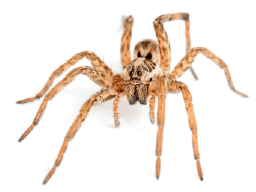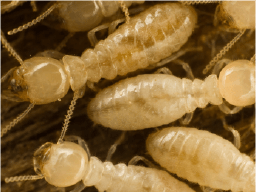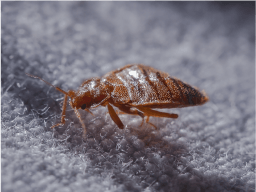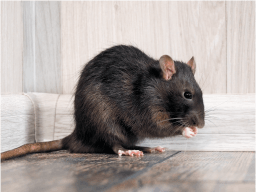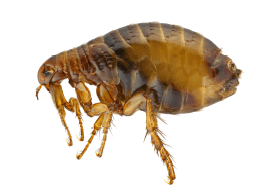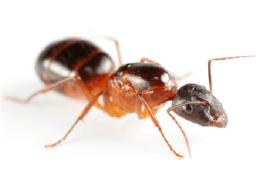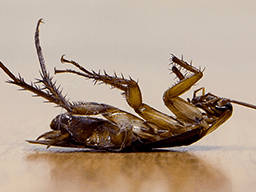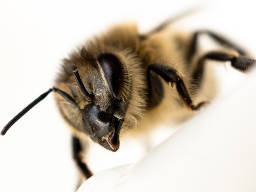Norway Rats vs. Roof Rats: What Every Homeowner Should Know
by John Saenz | January 29, 2025 | Blog

Rats are among the most invasive and destructive creatures homeowners can face. Their ability to infiltrate homes, spread diseases, and cause extensive property damage makes them a top concern for anyone who values a secure and healthy living environment. Two of the most common rat species that invade homes are Norway rats and roof rats.While they may share the label of “rat,” these two species significantly differ in appearance, habits, and preferences. In this blog, we’ll dive into the differences between Norway rats vs. roof rats, helping you identify each species and prevent rat infestations in your home.
Norway Rats vs. Roof Rats: What Are They & How Are They Different?
The terms Norway rats vs. roof rats often come up when discussing rat infestations, but many homeowners may not fully understand what distinguishes one from the other. Let’s take a closer look at these two species.
What Are Norway Rats?
Norway rats (Rattus norvegicus), also known as brown rats, sewer rats, or wharf rats, are one of the most common rat species worldwide. These rodents are ground dwellers and thrive in urban and suburban areas with abundant food and shelter. Despite their name, Norway rats likely originated in Asia and spread globally through human travel and trade. Let’s now take a look at their physical traits, behavior, and habitat below:
Physical Traits of Norway Rats
- Size and Build: Norway rats are large and heavy, measuring 7-9 inches in body length, with an additional 6-8 inches for their tails. They can weigh up to a pound, making them larger than roof rats. Their sturdy build makes them more visible during rat infestations.
- Fur Color: Their fur is coarse and typically brown or gray, often with lighter shading on their underside. This coloration helps them blend into their surroundings, particularly in basements or outdoor environments.
- Tail Features: Their tails are thick, scaly, and shorter than their body length, a distinguishing feature compared to roof rats.
Behavior and Habitat of Norway Rats
- Ground-Oriented Lifestyle: Norway rats prefer to burrow and rarely climb. They are less agile than roof rats but bolder and more likely to explore new traps or environments, often venturing into visible areas. To create their nests, they dig extensive tunnel systems around foundations, under sheds, or near gardens, usually causing structural damage.
- Dietary Habits: Norway rats are omnivores and opportunistic eaters. They consume grains, meat, garbage, and pet food. Their varied diet attracts them to unsealed trash, pet bowls left outside, and even compost piles.
- Active Hours: Norway rats are nocturnal like roof rats. However, spotting one during the day often indicates a large rat infestation or food scarcity within their colony
What Are Roof Rats?
Roof rats (Rattus rattus), also known as black rats or ship rats, are sleeker and more agile than their Norway rat counterparts. They are excellent climbers and tend to live in elevated areas like trees, attics, and rafters. Unlike the Norway rat, the roof rat’s origins can be traced back to tropical regions, and they thrive in warmer climates. Let’s now take a look at their physical traits, behavior, and habitat below:
Physical Traits of Roof Rats
- Size and Build: Roof rats are slightly smaller than Norway rats, measuring 6-8 inches in body length. However, their tails are longer than their bodies, often adding another 7-10 inches to their overall length. This gives them a lean and elongated appearance.
- Fur Color: Roof rats with black or dark brown fur are darker, and their undersides may be lighter. This darker coloration makes them harder to spot in attic spaces or among dense foliage.
- Tail Features: Their long, thin, and hairless tails are a defining characteristic. They help them maintain balance while climbing and maneuvering through tight spaces.
Behavior and Habitat of Roof Rats
- Climbing Experts: Roof rats prefer elevated locations and nest in trees, shrubs, attics, and rafters. They are also agile climbers and extremely cautious, requiring more strategic and careful placement of traps and bait. They enter homes by climbing along utility lines, fences, or overhanging branches, so ensure you monitor access points near your roof.
- Selective Diet: Roof rats are more selective eaters than Norway rats, favoring fruits, nuts, seeds, and vegetables. They may raid gardens, orchards, or pantry storage areas for these items.
Norway Rats vs. Roof Rats: How to Identify Them
Now that you know the physical traits and behavior of Norway rats vs. roof rats, identifying which rat species you’re dealing with is the first step toward effective pest control. Here’s a quick, easy-to-read comparison to help you distinguish between the two species:
| Feature | Norway Rats | Roof Rats |
| Size | Larger and heavier | Slimmer and smaller |
| Tail | Thick, shorter than the head and body combined, covered in coarse fur | Thin, longer than the body, scaly, and almost hairless |
| Fur Color | Brown or grayish with a lighter underside | Darker, usually black or dark brown, with a lighter belly |
| Appearance | Small eyes and ears with blunt noses | Large eyes and ears with pointed noses |
| Habitat/Nests | Underground burrows, basements, sewers, and gardens | Attics, rafters, trees, and higher areas |
| Droppings | Large, capsule-shaped with blunt ends | Smaller, pointed, usually found in elevated areas |
| Gnaw Marks | Found on wood, pipes, or foundations, often outdoors | Found on rafters, wiring, or exposed structures |
| Entry Points | Lower entry points, such as cracks in the foundation | Higher entry points, like roof vents or gaps in walls |
Are Norway Rats and Roof Rats Harmful?
Both Norway rats and roof rats pose significant risks to homeowners, ranging from health concerns to property damage. They are known carriers of dangerous diseases, including the plague, which rat fleas have historically transmitted; leptospirosis, which spreads through contaminated water or soil; and hantavirus, which is found in rat droppings, urine, and saliva. These pests can also spread salmonella through contaminated food or surfaces, leading to foodborne illnesses.
In addition to these health hazards, rats are notorious for their destructive tendencies. With their burrowing habits, Norway rats can undermine the stability of foundations, causing long-term structural issues. Roof rats, on the other hand, often chew through electrical wires in attics, increasing the risk of house fires. Their gnawing can also damage insulation, pipes, and stored items.
5 Tips on How to Prevent Norway Rats and Roof Rats Infestations
The best way to avoid rat infestations is prevention. Use these 5 strategies to keep Norway rats, vs roof rats, out of your home:
- Seal Entry Points: Inspect your home for gaps and cracks, sealing them with materials like steel wool or caulk. Pay special attention to areas around pipes, vents, and doors.
- Use Traps and Repellants: Use traps (snap traps, glue traps, or bait traps) strategically placed along walls or in areas with high rat activity. Check traps daily to ensure effectiveness. Meanwhile, natural repellents like peppermint oil and ultrasonic devices may provide temporary relief but are not foolproof and often require frequent reapplication.
- Eliminate Outdoor Sources: Keep garbage in tightly sealed bins and store food in airtight containers. Regularly clean up food crumbs and spills to avoid attracting rats.
- Trim Vegetation: Keep trees and shrubs trimmed back to prevent roof rats from accessing your roof. Overhanging branches should be cut at least 3 feet from the house.
- Clean Up Clutter: Remove debris, organize storage areas, and reduce hiding spots in your yard. Rats are less likely to settle in areas without adequate shelter.
- Fix Leaks: Eliminate sources of water by repairing leaky faucets and pipes. Stagnant water can attract rats and provide a necessary resource for their survival.
Norway Rats vs. Roof Rats: When to Call a Professional?
While some DIY methods like traps and sealing entry points can offer temporary relief from Norway rats and roof rats, they often don’t address the root cause of the rat infestation. Signs like increased droppings, gnawed wires, scratching noises, or foul odors mean the infestation is worsening. Nests, grease marks, or frequent rat sightings also indicate that these adaptable pests are reproducing quickly and becoming increasingly difficult to control without proper tools and expertise.
If you find yourself still dealing with a rat infestation after taking basic measures, it’s time to call in professional pest control services. Pest control experts have specialized techniques and treatments that not only terminate rats but also prevent future problems, ensuring your home stays protected!
Protect Your Home from Norway Rats vs. Roof Rats with Pest Control Experts!
If you’re noticing signs of Norway rats or roof rats in your home, it’s time to act fast. These pests can cause serious damage to your property and spread diseases if left unchecked. Don’t wait for a full-blown infestation to take hold! We partner with some of the highest trained pest control operators to ensure you receive expert service and effective lasting solutions for all of your pest problems.
Call us today for a complimentary quote and schedule your home pest inspection right away. Our experienced team is ready to assess your home and provide effective solutions to protect your space!





